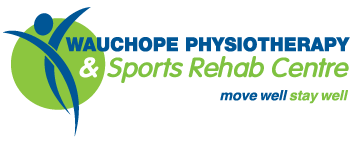Headaches and Neck Pain
For many people, headaches start as pain or tension at the top of the neck. As the pain worsens, it may spread to the back of the head, the temples, forehead or behind the eyes. Moving the neck or bending forward for a long time tends to make it worse. This happens because the nerves in the upper part of your neck are connected to the nerves in your head and face. A disorder of the upper neck or muscles can cause referred pain to your head.
Any of the following points could suggest that your neck may be causing the headache:
- Pain radiating from the back to the front of the head
- Headache with dizziness or light-headedness
- Headache brought on or worsened by neck movement or staying in the same position for a long time
- Headache which always feels worse on the same side of your head
- Headache eased by pressure to the base of the skull
- Headache which persists after your doctor has checked for other causes.
How Can Physiotherapy Help?
Physiotherapists are experts in posture and human movement. They will be able to determine if your neck is causing or contributing to your headaches. Physiotherapists may use:
- Mobilisation
- Manipulation
- Functional and rehabilitative exercises
- Encouraging normal activity
- Postural assessment, correction and advice
- Relaxation therapy
- Laser, ultrasound, electrotherapy and heat treatment
- Massage
Your physiotherapist can also offer you self-help advice on ways to correct the cause of headaches, such as practical ergonomic tips for work and in the home; adjusting furniture, relaxation, sleeping positions, posture and exercise.
Treatment
Postural neck ache can usually easily be treated with some gentle, sustained mobilisation of the upper cervical spine by a physiotherapist and a stretching program to prevent recurrence.
About Neck Pain
Neck complaints that cause pain or restricted movement can be considered a cervical spine dysfunction, a condition most people experience at some point in their life. The neck consists of seven vertebrae each with a shock absorbing discbetween them, supported bymuscles and ligaments. A complex structure, the neck is required to support the weight of your head, which is around 8 per cent of your total body weight, as well as provide enough movement to look at the floor, the ceiling, over each of your shoulders and tilt your head to around 45 degrees on each side. To complicate matters further, the relative weight of your head against gravity increases approximately 1.5 kilograms for every centimetre it sits forward of your shoulders. This means that if you have a ‘forward head posture’ which is commonly seen in computer workers, your neck joints will be under more pressure with muscles having to work harder just to hold your head up.
Neck Symptoms
Symptoms of cervical spine dysfunction can include pain with movement, restriction (most commonly rotation) with or without pain, muscular spasm/tightness, headaches, general fatigue and a feeling of having a ‘heavy head’. Cervical spine dysfunction can commonly refer pain to the top of the shoulders and between the shoulder blades. Clicking, cracking or grinding within the neck may also be present during cervical spine dysfunction and is indicative of restricted individual joint movement. Neck problems may arise from positional problems such as prolonged poor posture or sleeping ‘funny’, muscle overactivity from stress and tension, or from traumatic events such as a car accident or sporting injury.
There are some more serious causes of cervical spine dysfunction such as pinched nerves and bulging discs which may cause severe neck pain or pins and needles, numbness and/or weakness in the neck, arms or hands.
What can you do?
If your neck is sore and you do not have any of the severe symptoms listed above, there are some simple things you can do to relieve discomfort.
- Keep moving: Although it may be a little uncomfortable it is important to try to keep your neck moving as much as possible to avoid stiffness, but be sure to stop if you experience any severe pain.
- Watch your posture: Be careful to keep your neck in a neutral position during sustained poses such as watching TV, reading or using the computer.
- Stretches: Basic neck stretches may reduce muscle tightness.
- Heat: A heat pack or hot water bottle on the area for 15-20 minutes at a time can relieve muscle tightness and spasm. Be careful not to burn yourself as gentle warmth is all that is required.
